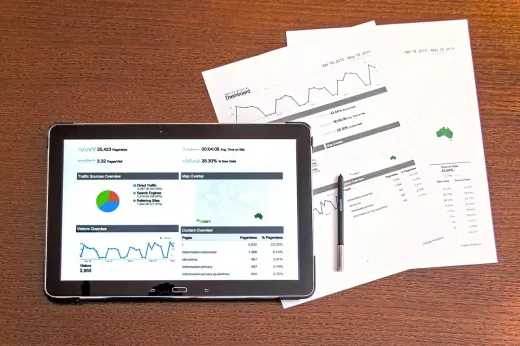Why lead scoring and sales alignment are crucial for marketing automation
Marketing automation has revolutionized the way we market our products and services. With automation, we can reach a broader audience with personalized messages, nurture leads, and convert them into customers. However, it's not just about sending out emails and hoping for the best. To get the most out of your marketing automation system, you need to ensure that your marketing and sales teams are aligned.
Lead scoring and sales alignment are two critical components of marketing automation. Lead scoring allows you to prioritize your leads based on their behavior and engagement with your brand. Sales alignment, on the other hand, ensures that your sales team is working with your marketing team to achieve a common goal. By aligning your marketing and sales teams, you can ensure that your leads are being nurtured and converted into customers efficiently.
How lead scoring works
Lead scoring is the process of assigning a numerical value to leads based on their behavior and engagement with your brand. The more engaged a lead is, the higher their score will be. Conversely, if a lead has not engaged with your brand, their score will be lower.
There are several factors to consider when assigning lead scores. These include the lead's level of engagement with your brand, their job title, their industry, and their company size. By assigning scores to each of these factors, you can determine which leads are most likely to convert into customers.
Factors to consider when assigning lead scores
When assigning lead scores, there are several factors to consider. The first factor is the lead's level of engagement with your brand. This includes their website visits, email opens, and click-through rates. The more engaged a lead is, the higher their score should be.
The second factor is the lead's job title. Depending on your business, certain job titles may be more likely to convert into customers. For example, if you're selling software to businesses, a CTO or IT manager may be more likely to convert than an entry-level employee.
The third factor is the lead's industry. Depending on your product or service, certain industries may be more likely to convert into customers. For example, if you're selling marketing automation software, a marketing agency may be more likely to convert than a construction company.
The fourth factor is the lead's company size. Depending on your product or service, companies of a certain size may be more likely to convert into customers. For example, if you're selling accounting software, a small business may be more likely to convert than a large corporation.
Implementing lead scoring in your marketing automation system
Implementing lead scoring in your marketing automation system can be a complex process, but it's worth the effort. The first step is to determine which factors you want to include in your lead scoring model. Once you've determined these factors, you'll need to assign points to each one.
For example, you might assign five points for a lead who has visited your website, ten points for a lead who has clicked on a link in one of your emails, and 15 points for a lead who has downloaded a whitepaper from your website. Once you've assigned points to each factor, you'll need to set a threshold for what constitutes a "qualified" lead.
For example, you might decide that any lead with a score of 50 or higher is considered a qualified lead. Once a lead reaches this threshold, they can be passed on to your sales team for further nurturing.
Sales alignment and lead nurturing
Once your leads have been scored, it's essential to ensure that your sales team is aligned with your marketing team. This means that your sales team should be aware of which leads are the most qualified and ready for further nurturing.
By aligning your sales and marketing teams, you can ensure that your leads are being nurtured effectively. Your marketing team can continue to send targeted messages to these leads, while your sales team can focus on building relationships and closing deals.
Benefits of sales alignment in marketing automation
The benefits of sales alignment in marketing automation are numerous. By aligning your sales and marketing teams, you can ensure that your leads are being nurtured effectively, which can result in higher conversion rates and more revenue.
Additionally, sales alignment can help to streamline your sales process. By having a clear understanding of which leads are the most qualified, your sales team can focus their efforts on the leads that are most likely to convert.
Finally, sales alignment can help to improve communication between your sales and marketing teams. By working together towards a common goal, your teams can share insights and best practices, which can lead to higher levels of productivity and efficiency.
Common challenges and how to overcome them
Implementing lead scoring and sales alignment can be challenging, but there are ways to overcome common obstacles. One of the most common challenges is resistance from your sales team. Your sales team may be hesitant to adopt a new process, or they may not understand the value of lead scoring.
To overcome this challenge, it's essential to communicate the benefits of lead scoring and sales alignment to your sales team. Show them how these processes can help them to close more deals and increase their revenue.
Another common challenge is choosing the right lead scoring model. There are many different models to choose from, and it can be challenging to determine which one is right for your business. To overcome this challenge, it's essential to work with your marketing team to determine which factors are most important to your business and to test different models to see which one works best.
Best practices for lead scoring and sales alignment
To get the most out of your lead scoring and sales alignment efforts, there are several best practices to follow. First, it's essential to communicate regularly with your sales team to ensure that they understand which leads are the most qualified and ready for further nurturing.
Second, it's essential to continually evaluate your lead scoring model to ensure that it's working effectively. This means testing different factors and thresholds to see which ones lead to the highest conversion rates.
Finally, it's essential to share insights and best practices between your sales and marketing teams. By working together, you can identify areas for improvement and continually refine your processes.
Tools for lead scoring and sales alignment
There are many tools available to help you implement lead scoring and sales alignment in your marketing automation system. Some popular tools include Marketo, HubSpot, and Pardot.
These tools can help you to automate the lead scoring process, ensure that your sales team is aligned with your marketing team, and provide insights into which leads are the most qualified.










